“Stairway to Heaven” sounds GORGEOUS on the piano. And you can play it too! This lesson includes both a tutorial and free sheet music for “Stairway to Heaven” by Led Zeppelin. Learning this piece as a beginner may take some practice, but it still sounds good at a slower tempo and practicing it will teach you a lot about rhythm!
<<Download the FREE Full Score Here>>
<<Download the FREE Lead Sheet Here>>
This rock anthem doesn’t follow the usual verse-chorus-bridge structure, so we’ve broken it down into an introduction and four sections. I’ll also show you how to embellish your left-hand accompaniment with your own chords.
While “Stairway to Heaven” is a notoriously long song, guess what: you only need to learn a few sections because there are tons of repeats! So let’s dive in.
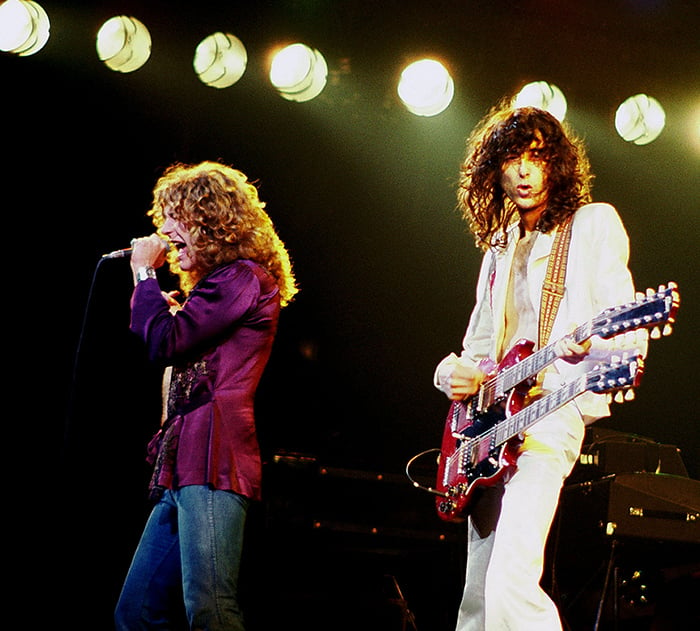
Subscribe to The Note for exclusive interviews, fascinating articles, and inspiring lessons delivered straight to your inbox. Unsubscribe at any time.
This is the iconic intro to the rock masterpiece.
In terms of music theory, though, it’s a pretty simple intro. In fact, you can break the intro down into some very basic chord shapes. If you know these chord shapes already, you’ll be able to play the introduction in no time.
The fingering may take a little practice, so if you’re new to crossing over and tucking under, feel free to write down fingering that will help you.

While that’s happening, the left hand walks down a series of half-steps. The fancy word for this is chromaticism.
You may recognize the chord shapes on the right hand like this:
A – 1st Inversion
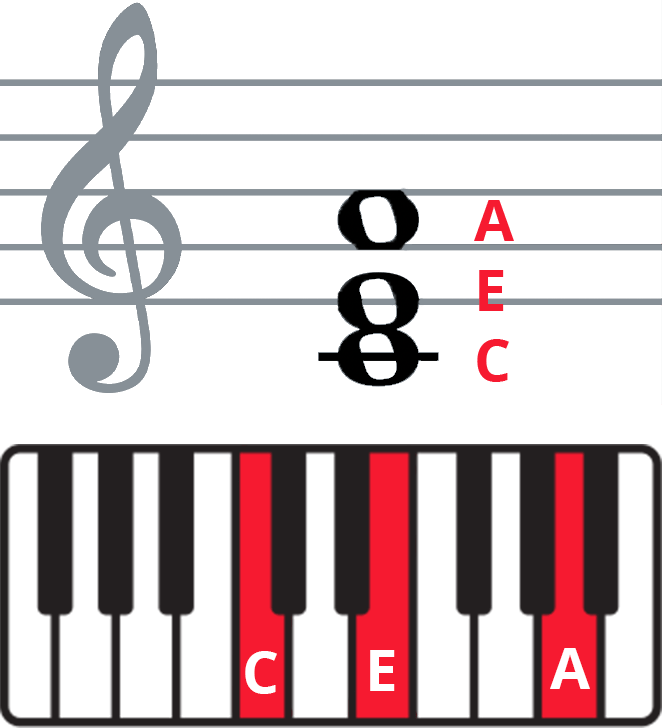
D – 2nd Inversion
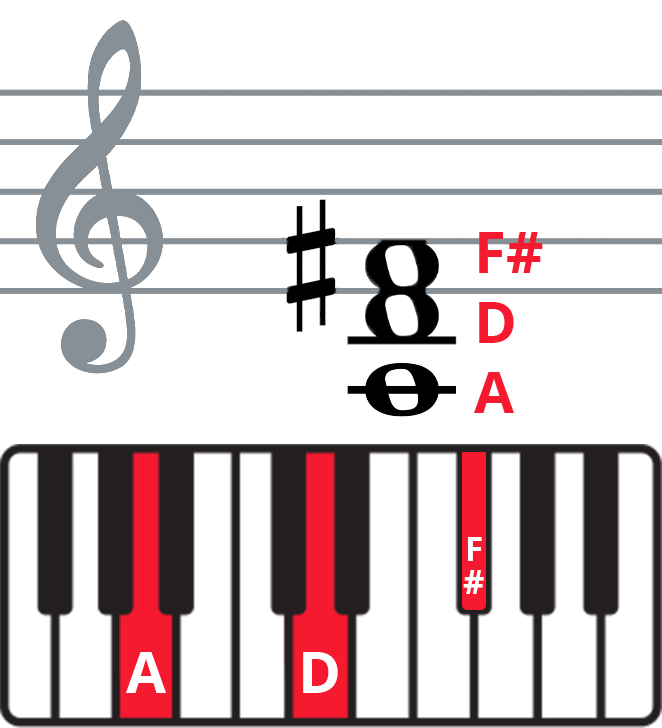
F7
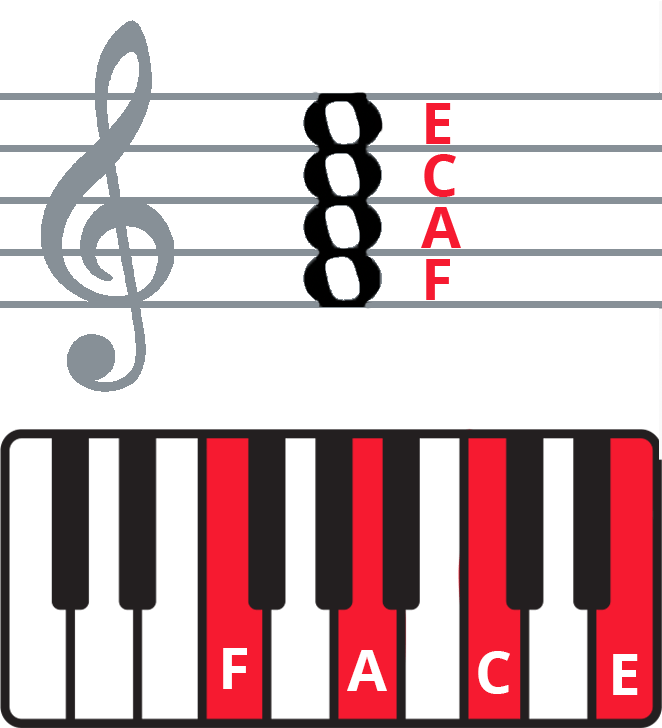
Sections A and B are kind of like verses 1 and 2 in a typical verse-chorus structure.
In the A section, the bass line stays similar to the bass line in the intro. Meanwhile, the right hand plays a melody that fits quite neatly under the right hand. You won’t have to cross over until the G at the end of Fmaj7!

The first and second endings of Section A have trickier fingering. A tip here is to look ahead: be aware of what fingering you’ll have to use in the next measure and you won’t be hunting for notes!
The bass line changes slightly during the B section, but the right hand stays pretty similar.

That’s what I love so much about this song 🙂 It’s a very long song but it’s never boring because, although some areas some similar, there are these tiny little details that keep you curious!
In this section, we’ll add a little pep in our step. The energy lifts, the tempo increases, and some extra sixteenth notes add even more quickness.

If you’re unfamiliar with rests and sixteenth notes, feel free to write down the counting like we do here. But if it makes more sense to you, and you know the song well, rely on your intuition! When it comes to pop songs, sheet music is a guide rather than definitive instructions.
📜🎹 HISTORY BITE: “Stairway to Heaven” wasn’t an instant success. In fact, Led Zeppelin claims its inaugural performance was met with boredom. With its unusual structure and need for multiple types of guitars, it was also challenging to play live. Nevertheless, the song has become legendary, inspiring young rockers for generations and making Jimmy Page’s double-necked Gibson an iconic instrument.
You’ll recognize this section right away. It’s the part where you wanna belt: “And as we wind on down the road!“
You may notice there are some unusual rhythms in this section. What’s with all those dotted eighth notes?? Don’t worry, the video runs through them in detail, and I’ll also show you how I write in the rhythms on the sheet music. Yup, experienced musicians do this too!
We’ve broken down the rhythm into “1-e-and-a 2-e-and-a…” which means each syllable represents one sixteenth note beat. You’ll also see that I write the first syllable of each count under the note as a quick way to tell on which syllable to play a note.
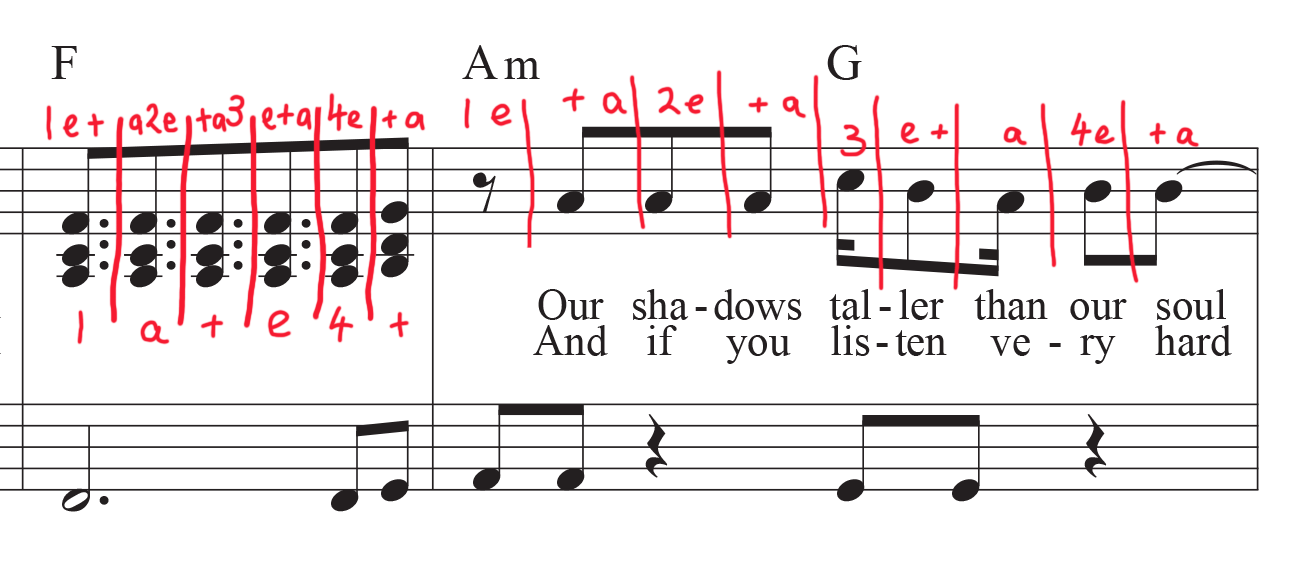
You don’t have to play “Stairway to Heaven” exactly as it’s written 🙂 If you want a little more creative license with the song, use the lead sheet (which just has the melody and the chords) and add your own accompaniment.
One way to add accompaniment is to play with the fifth shape in the left hand, then change the bass notes according to the slash chords while your thumb stays in place. This sounds so pretty!
You can also use the chord shapes we mentioned in the introduction to improvise your own accompaniment.
“Stairway to Heaven” will take some practice, but I hope this sheet music and tutorial help! Practice in chunks, count out loud, and when you’re comfortable with it, don’t be afraid to get dramatic and rock out!
…And if you’re a rock fan, don’t forget to check out these riffs that sound better on the piano than guitar! (At least that’s what we think 😉 )
Lisa Witt has been teaching piano for more than 20 years and in that time has helped hundreds of students learn to play the songs they love. Lisa received classical piano training through the Royal Conservatory of Music, but she has since embraced popular music and playing by ear in order to accompany herself and others. Learn more about Lisa.


By signing up you’ll also receive our ongoing free lessons and special offers. Don’t worry, we value your privacy and you can unsubscribe at any time.
We use cookies for traffic data and advertising. Cookie Policy »